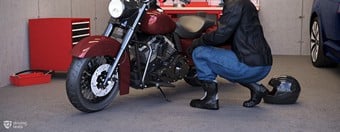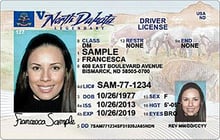Perfect for learner’s permit, driver’s license, and senior refresher test. Strong winds, sudden temperature changes, and occasional blizzards are some of the challenges you’ll face on North Dakota’s open roads. The state’s beauty is undeniable, and it offers a thrilling motorcycling experience to anyone who ventures out of the busy cities. The open landscapes might seem daunting at first, but they provide an incredible sense of freedom to riders who seek adventure. Whether navigating busy highways or rural backroads, you must hold a valid Class M license. Aspiring riders must pass a motorcycle knowledge exam and a practical, on-cycle skills test before they can obtain a Class M license. (Applicants under 18 years of age must first get written consent from a parent or guardian.)
Applicants 14 or 15 years of age must complete an approved motorcycle safety course and practice with a learner’s permit for at least two months before taking the skills test. Applicants 16 or 17 years of age must hold a learner’s permit for at least six months, but they are not required to complete an approved motorcycle safety course. Applicants at least 18 years of age are not required to obtain a learner’s permit or complete a motorcycle safety course. However, the skills test may be waived for any applicant at least 14 years of age who completed a motorcycle safety course within the last six years.
In North Dakota, the Department of Transportation (DOT) publishes the official motorcycle operator manual (North Dakota Motorcycle Manual). This valuable resource contains information on basic vehicle control, carrying passengers, and your responsibilities as a licensed rider. The official motorcycle knowledge exam consists of 25 multiple-choice questions based on this manual. To pass, you must score at least 80%. Test anxiety is a common occurrence that hinders the performance of even the most determined students, causing them to make costly mistakes. We offer an educational tool for aspiring riders who want to familiarize themselves with the content and format of the official motorcycle knowledge test.
Our North Dakota DOT motorcycle permit practice tests can be a game changer when used regularly. Each practice test has been recently updated for December 2025. For your convenience, we have omitted any timer and implemented a straightforward interface that can be used even by those not skilled with computers. Navigating through the test is also possible with your keyboard. Use the “Shift + ?” key combination to display a list of keyboard shortcuts that you can use to complete the practice test more efficiently. Do not get discouraged by mistakes, as they are common among beginners who are just getting started. We’ll point your mistakes out as soon as they occur, allowing you to learn from them and work on areas that need improvement.














